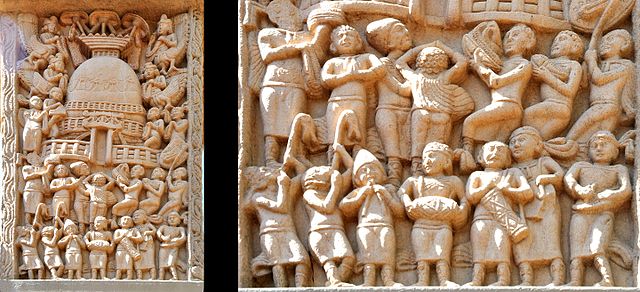Religious music is a type of music that is performed or composed for religious use or through religious influence. It may overlap with ritual music, which is music, sacred or not, performed or composed for or as ritual. Religious songs have been described as a source of strength, as well as a means of easing pain, improving one's mood, and assisting in the discovery of meaning in one's suffering. While style and genre vary broadly across traditions, religious groups still share a variety of musical practices and techniques.
David playing his harp (unknown artist, c. 960). The book of Psalms, included in the Jewish and Christian scriptures, and said to have been written largely by David, is one of the earliest collections of sacred music, and still plays a role in the liturgies of the two religions.
Image of a Taus
Buddhist music is music created for or inspired by Buddhism and includes numerous ritual and non-ritual musical forms. As a Buddhist art form, music has been used by Buddhists since the time of early Buddhism, as attested by artistic depictions in Indian sites like Sanchi. While certain early Buddhist sources contain negative attitudes to music, Mahayana sources tend to be much more positive to music, seeing it as a suitable offering to the Buddhas and as a skillful means to bring sentient beings to Buddhism.
Relief of musicians from Sanchi
Tibetan illustration of Saraswati holding a veena, the main deity of music and musicians in Mahayana Buddhism
A musical ensemble with flute and an ancient Indian vina, from Amaravati
A relief depicting musicians at Chakhil-i-Ghoundi Stupa, Hadda, Afghanistan, 1st–2nd century CE






